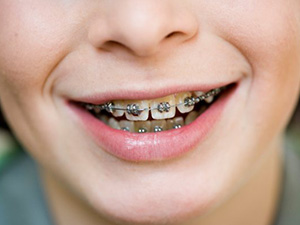
Orthodontic treatment is a step-by-step process that aims to align and straighten the teeth and jaws for improved function, aesthetics, and overall oral health. Here's an outline of what you can typically expect during the orthodontic treatment process:
1. Initial Consultation
During the first visit, the orthodontist will conduct a comprehensive examination. This includes:
- Discussing your dental and medical history.
- Taking X-rays, photographs, and impressions of your teeth.
- Analyzing your bite and any misalignments. The orthodontist will then discuss the best treatment options for you based on the results of the examination.
2. Treatment Planning
Once the orthodontist has all the necessary information, a personalized treatment plan is developed. This plan outlines the type of braces or aligners to be used, the expected duration of treatment, and the steps involved in achieving the desired results. The orthodontist may also discuss any necessary lifestyle changes or habits (such as oral care) to ensure the treatment is successful.
3. Placement of Braces or Aligners
- Braces: If you are getting traditional metal braces, the first step involves attaching brackets to the teeth using dental cement. Then, a wire is threaded through the brackets, and small rubber bands may be used to hold the wire in place. The orthodontist will adjust the braces to apply gentle pressure on the teeth, gradually moving them into the desired position.
- Clear Aligners: If you are using clear aligners (such as Invisalign), a series of custom-made plastic trays will be provided. Each tray is worn for a set amount of time before being replaced with the next set in the series to gradually shift the teeth.
4. Regular Adjustments and Monitoring
Throughout the treatment, you will visit the orthodontist regularly (usually every 4-6 weeks) for adjustments. During these visits, the orthodontist will check your progress, tighten the braces or switch to a new set of aligners, and make any necessary modifications. These adjustments are key to ensuring that your teeth are moving in the right direction.
5. Maintaining Oral Hygiene
Maintaining proper oral hygiene is crucial during orthodontic treatment. Braces and wires can trap food and plaque, so you will need to brush and floss more frequently and carefully. Your orthodontist may provide tips on how to properly clean around your braces or aligners to prevent cavities and gum disease.
6. Final Stages of Treatment
Once the orthodontist determines that your teeth are aligned and your bite is corrected, the treatment will near completion. For patients with braces, the brackets and wires will be removed, and retainers will be provided to maintain the new position of your teeth.
7. Post-Treatment and Retainers
After the main treatment phase is completed, wearing retainers is essential to keep your teeth in their new positions. Retainers help prevent the teeth from shifting back to their original alignment. The orthodontist will provide instructions on how often to wear them, and you will need follow-up visits to monitor progress.
8. Ongoing Maintenance
Even after the braces are removed, maintaining your teeth and gums' health is important. Regular dental check-ups, good oral hygiene, and wearing retainers as prescribed will ensure long-term success.

 Türkçe
Türkçe English
English

Contact Form